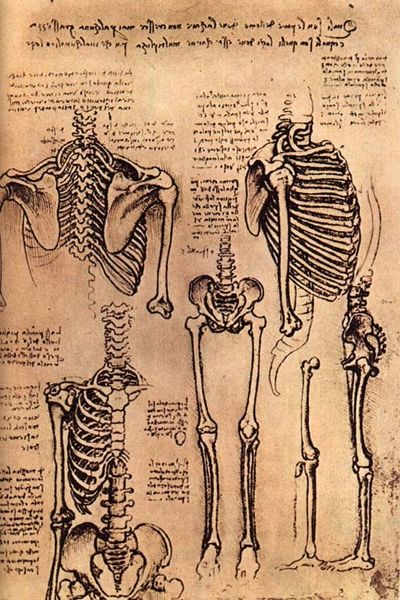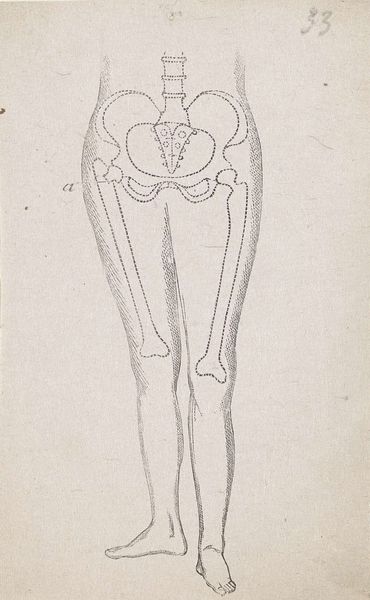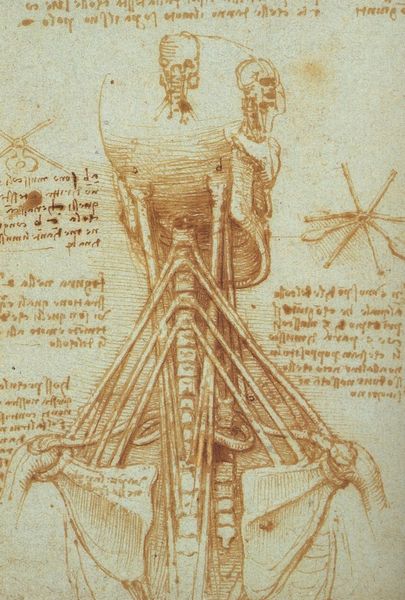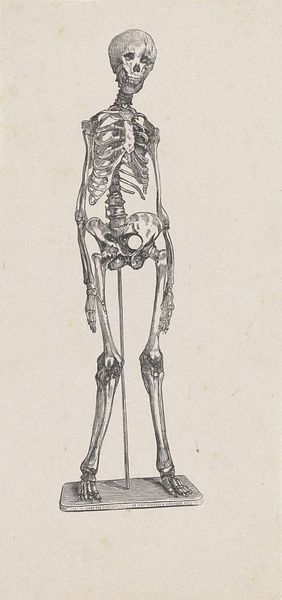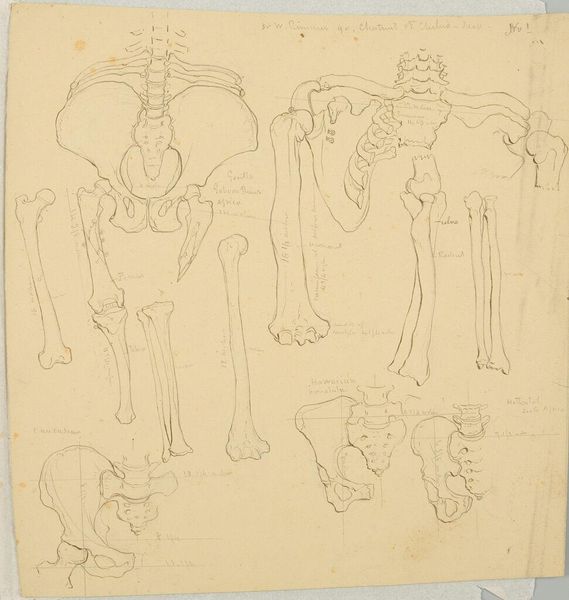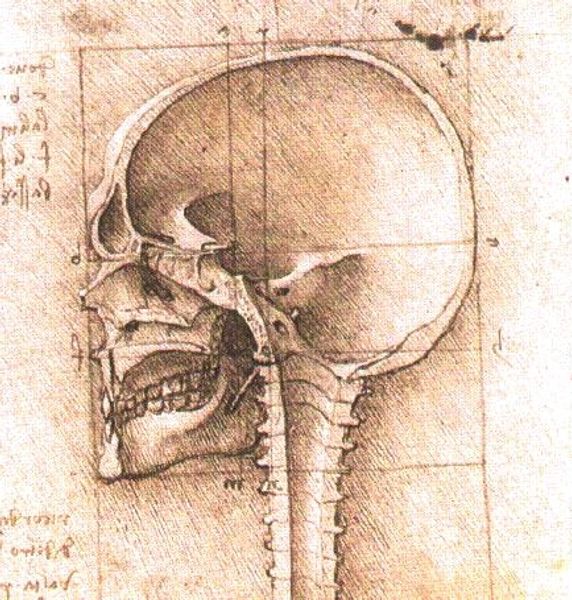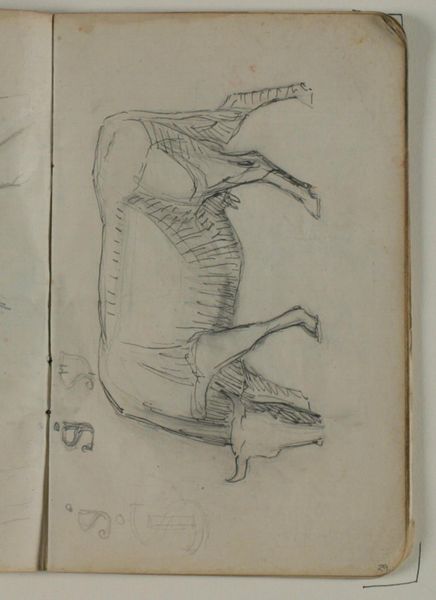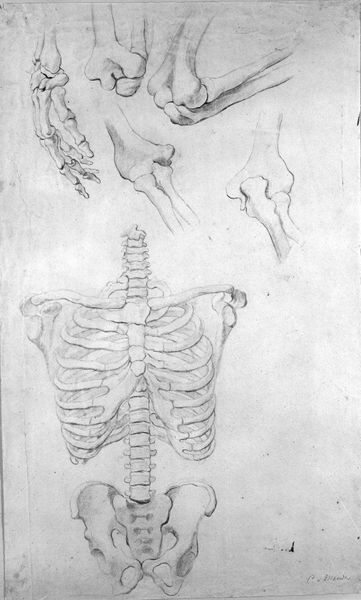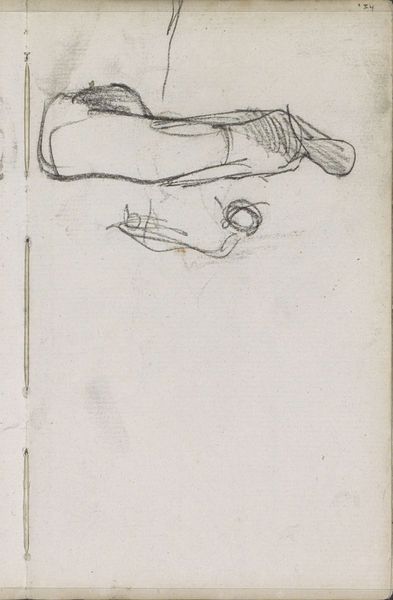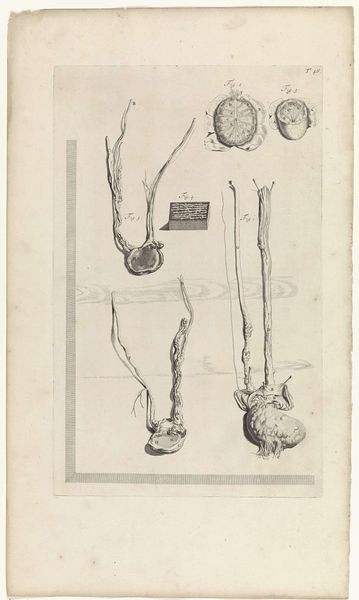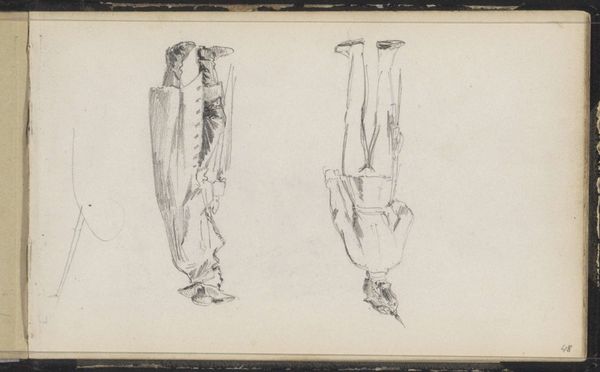
drawing, paper, ink
#
drawing
#
figuration
#
paper
#
form
#
11_renaissance
#
ink
#
line
#
history-painting
#
academic-art
#
italian-renaissance
#
realism
Copyright: Public domain
Curator: This is Leonardo da Vinci's "Drawing of the Comparative Anatomy of the Legs of a Man and a Dog," created around 1500. The medium is ink on paper. Editor: My first impression is one of stark precision and scientific curiosity. The drawing has this ethereal, almost unsettling beauty because of the fine linework and direct comparison of human and animal form. Curator: Indeed. It's a prime example of the Renaissance humanist project: studying the natural world through meticulous observation. The materiality is important here—the use of ink, readily available, allowing for detailed rendering and annotation. He wasn't just creating art; he was documenting his scientific inquiry. Think of the paper too, how the availability of paper affected what sorts of studies could happen. Editor: The symbolism resonates even now. By juxtaposing man and dog, da Vinci implies a connection, even an underlying unity, between humans and animals. One has to wonder if he thought this comparison degraded or ennobled us. Perhaps he viewed both with the same scientific interest and almost clinical detachment. Curator: Or perhaps he's commenting on labor! A dog’s labor differs drastically from that of a human of the era. The physical, material reality of what constitutes labor shapes each species, and shapes this drawing itself, through his act of intense labor in creating the work! Editor: Absolutely, and look at the script surrounding the drawings, a testament to da Vinci’s relentless pursuit of knowledge and understanding. It anchors the images firmly within a scientific context, almost creating a sense of a controlled experiment. Curator: Yes, and remember this wasn't mass produced, but painstakingly hand-drawn, making each line, each annotation a testament to human effort, intellectual struggle, and the constraints and possibilities offered by materials and available processes. Editor: Reflecting on it, the emotional weight arises from the merging of scientific coldness and the intimacy of manual creation. The visual echoes down the centuries. Curator: For me, understanding this work means looking at the production, distribution, and the material basis of knowledge creation itself during the Renaissance. Editor: And for me, seeing the layers of meaning beneath the surface of a seemingly simple comparative sketch unveils timeless connections about being human and our place in the natural world.
Comments
No comments
Be the first to comment and join the conversation on the ultimate creative platform.
